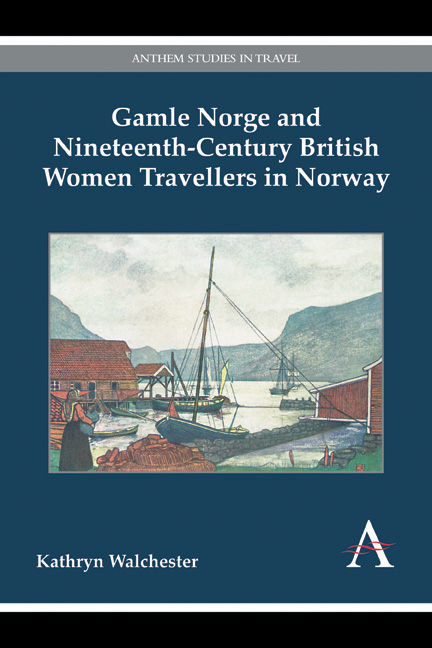Chapter 4 - Sportswomen
Published online by Cambridge University Press: 05 December 2015
Summary
I must now, Mr. Editor, wish you and your readers a Happy Christmas and take leave of you for this year, promising in the spring to send an account of sport in this country for the itinerant sportsman, coupled with a few hints that may be useful both to him and the tourist. These increase by scores – perhaps hundreds – every year. Norway, December, 1868. NORVAGUS.
This quotation from Bell's Life in London and Sporting Chronicle was published at the end of 1868, the year in which Lady Di Beauclerk published her account of A Summer and Winter in Norway with details of her participating in fishing, skating, sledging and walking in snowshoes. Both texts indicate the extent to which Norway was identified by the British as a destination in which to practise sports, in particular fishing and hunting. Norway's principal interest for the British traveller from the early 1830s was its abundance of wildlife, which could be shot or fished in extensive, wild surroundings. Sport was the driving force for tourism to Norway; in the early part of the century it was the cue for many upper-class travellers to go to Norway, and the reason why later in the century, when travel infrastructure grew and costs fell, larger numbers of middle-class people followed.
The travelogues which are the subject of this chapter describe hunting and fishing, but also winter sports such as skiing and skating, and more arduous activities such as mountaineering. In this chapter I refer to a number of texts by women to illustrate the way Norway was experienced, described and constructed by women who went there in order to participate in sporting activities during the period. Although some of the rhetoric and textual conventions used by the women in these ‘sporting travelogues’ are familiar and reminiscent of other more conventional writing by women travellers, there are a number of surprising changes. Firstly, although women's travel had always been noted as an ambivalent act, physical activity and exertion by middle- and upper-class women was, in the middle of the nineteenth century, considered as most transgressive behaviour.
- Type
- Chapter
- Information
- Publisher: Anthem PressPrint publication year: 2014

